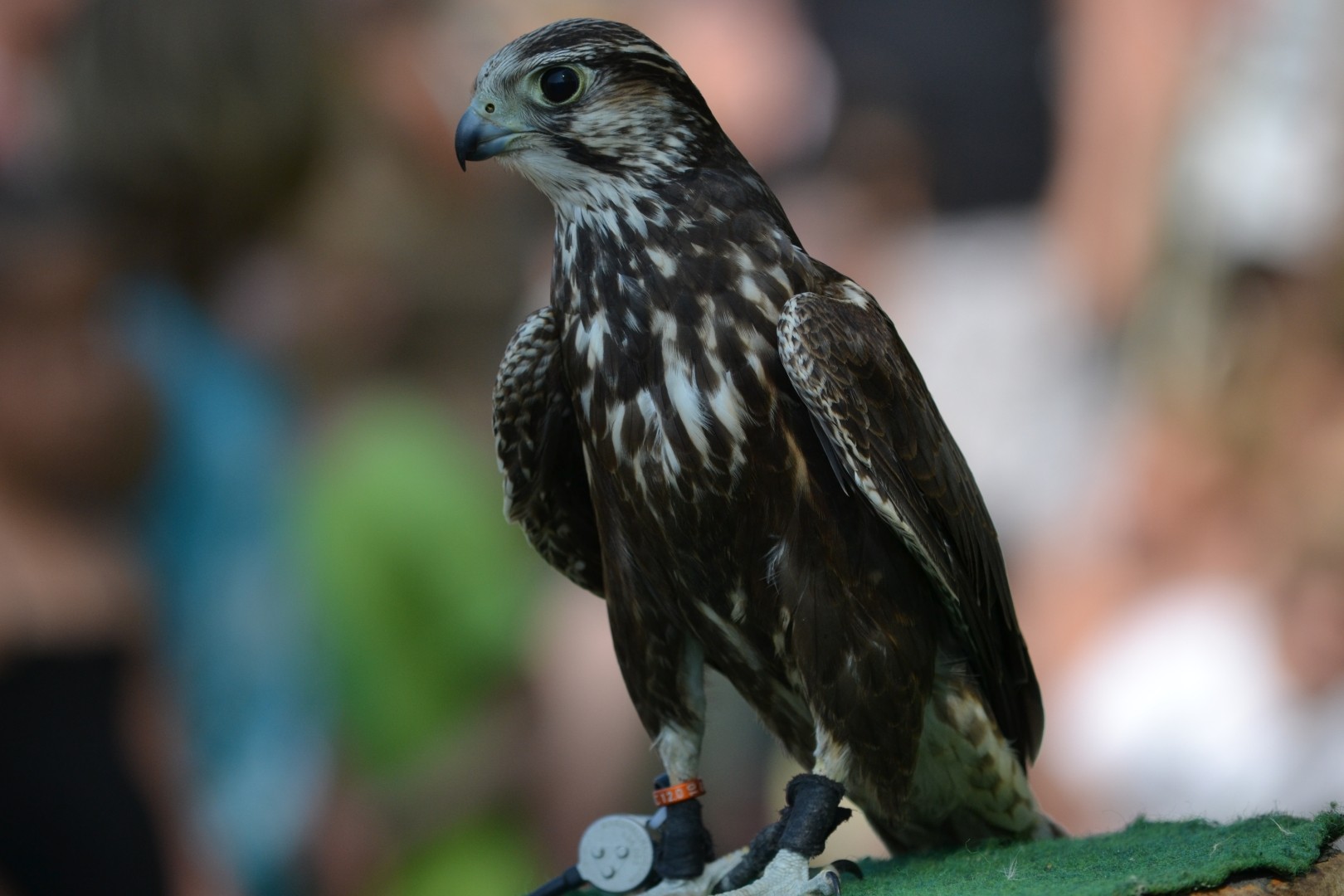Saker Falcon
A species of True Falcons, Also known as Saker Scientific name : Falco cherrug Genus : True Falcons
Saker Falcon, A species of True Falcons
Also known as:
Saker
Botanical name: Falco cherrug
Genus: True Falcons
Content
Description General Info
Description
The saker falcon is a large hierofalcon, larger than the lanner falcon and almost as large as gyrfalcon at 45–57 cm (18–22 in) length with a wingspan of 97–126 cm (38–50 in). Males weigh between 730–990 g (26–35 oz) and females 970–1,300 g (34–46 oz). It resembles a larger but browner gyrfalcon. It is larger and more heavily built than the related lanner falcon. Saker falcons tend to have variable plumage. Males and females are similar, except in size, as are young birds, although these tend to be darker and more heavily streaked. The call is a sharp kiy-ee or a repeated kyak-kyak-kyak. 
Size
55 cm
Life Expectancy
22 years
Nest Placement
Cliff
Feeding Habits
Saker Falcon's diet mainly consists of small mammals like rodents and susliks, alongside birds such as sandgrouse and galliforms. They predominantly hunt ground prey using vantage points or low foraging flights, and may cooperatively hunt as breeding pairs. Diet adaptations include a preference for mammals, comprising 73% of the intake in some regions.
Habitat
The saker Falcon primarily dwells in arid and semi-arid regions characterized by grasslands and steppes, often interspersed with trees and rugged terrain such as cliffs and canyons. Its habitat spans across broad, open areas from plains to more elevated landscapes. While non-breeding periods see a wider variety of habitats including coastal areas, marshes, and lakes, saker Falcon consistently prefers expansive terrains for hunting and roosting.
Dite type
Carnivorous
General Info
Feeding Habits
Bird food type
Species Status
BirdLife International categorises this bird as endangered, due to a rapid population decline, particularly on the central Asian breeding grounds. Ever since the collapse of the Soviet Union, the United Arab Emirates have been the main destination for thousands of falcons caught and sold illegally for hefty sums at the black market. Kazakhstan is estimated to lose up to 1,000 saker falcons per year. The species also faces pressure from habitat loss and destruction. The population was estimated to be between 7,200 and 8,800 mature individuals in 2004. However, sakers live at low densities across large ranges in remote regions, making distribution status difficult to assess. A climatic niche modelling study pinpointed certain remote areas for targeted population surveys. In the United States, Canada and Europe there are several captive breeding projects. The most dramatic decline of the saker falcon in Asia has been in Kazakhstan and Uzbekistan. In contrast, a strongly protected and relatively abundant population persists in Hungary. Saker falcons are known to be very susceptible to avian influenza, individuals having been found infected with highly pathogenic H5N1 (in Saudi Arabia) and H7N7 (in Italy) strains. Therefore, an experiment was done with hybrid gyr-saker falcons, which found that five falcons vaccinated with a commercial H5N2 influenza vaccine survived infection with a highly pathogenic H5N1 strain, whereas five unvaccinated falcons died. This means that sakers could be protected from bird flu by vaccination, at least in captivity. 
Scientific Classification
Phylum
Chordates Class
Birds Order
Diurnal Birds of Prey Family
Falcons and caracaras Genus
True Falcons Species
Saker Falcon 